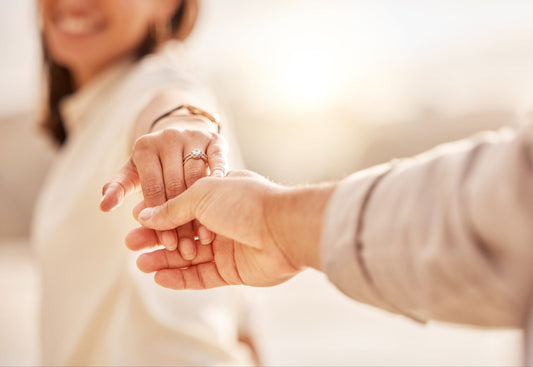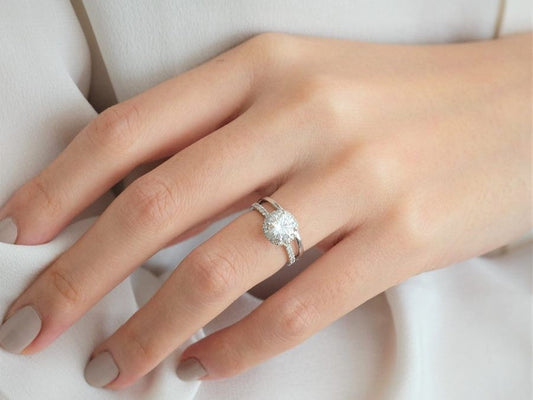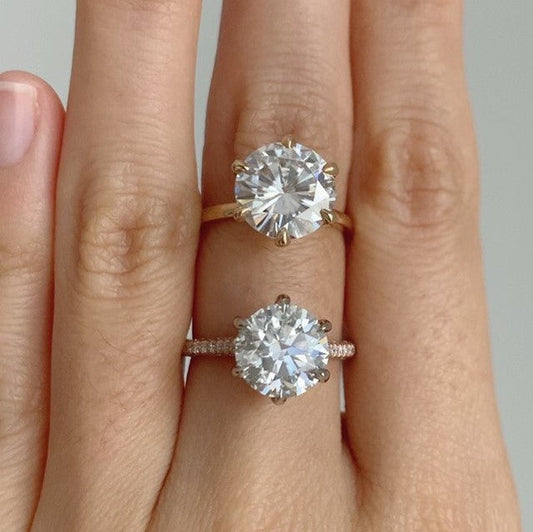Millennials may have created the most significant shift in generational buying habits. One of the most straightforward examples can be seen in the way they purchase millennial engagement rings.
Because they are the first generation to have grown up with the internet, their purchasing patterns have evolved accordingly. In today's society, millennials have a far higher faith in technology and its opportunities.
So, why aren’t millennials buying diamonds? And why don’t millennials buy diamonds the way other generations did?
A new set of principles governs how the millennial shopper spends money than generations before them. Before making large purchases, they'll conduct extensive research before making a purchase. Millennials rely on peer evaluations and virtual communities. Perhaps most importantly, millennials need to know about a product's and company's trustworthiness. They want to buy things that help a good cause and prefer to buy from establishments that share their values. These factors lead to why many millennials aren’t purchasing diamond engagement rings.
Today, we're covering who buys the millennial engagement ring, why they're avoiding diamonds, and why Moissanite rings have become a top seller.
Where to Shop for Engagement Rings
In the past twenty years, the avenues you can peruse and select an engagement ring have grown exponentially. Millennials raised in the digital age are more likely to shop online than previous generations. One of the benefits of shopping online is that you don't have to leave your house to look through hundreds of rings. When choosing an engagement ring, shopping online frequently might result in significant discounts, especially when selecting an ethically-sourced lab-grown diamond over a traditional stone.
Most importantly, millennials enjoy the convenience and simplicity of picking up millennial engagement rings online.
While enjoying their morning coffee, they can go through the ring selection without leaving their homes.
When to Buy Engagement Rings
A millennial engagement ring is typically bought up to two months before the proposal. While this is the norm, that doesn't mean you should hold off researching which ring is the one that will sparkle as bright as your loved one's eyes.
Start looking for an engagement ring far in advance if you want to uncover the one you'll cherish for the rest of your life. To find out what your partner likes, you'll need to know all the different cuts, from a classic square cut to a trendy oval.
How Much Should an Engagement Ring Cost?
Millennials have revolutionized a host of conventional practices, such as delaying major life decisions due to the economic climate they grew up in. This younger generation is putting off purchasing a home and getting married far longer than prior generations. This attitude toward life goals and spending has created circumstances around millennials not buying diamonds.
Engagement rings are less of a priority for millennials than for previous generations. The amassing of educational debt is one of the fundamental causes behind this. Ethical stones are more important since they want to show their social conscience. Big, elaborate engagement rings are no longer favored, with most millennials opting for alternative means like Moissanite.
Advertising in the 1980s set the standard that an engagement ring should cost three months' pay or more. However, after experiencing multiple recessions and world-changing events, millennials are no longer eager to follow this trend. Instead, they are choosing lower-cost alternatives, seen in everything from wedding planning to millennial engagement ring trends.
What is the Most Popular Engagement Ring Stone?
Realistic millennial engagement rings reflect the world this generation has been born into; they're vastly different from those worn by past generations.
Because of the growing concern about diamond mining practices, millennials aren’t buying diamonds and are opting for more environmentally friendly alternatives like lab-grown diamonds or exploring other gemstones. Mined diamonds are not only less socially responsible, but they are also more costly. Young people are increasingly choosing Moissanite as their engagement ring stone.
Moissanite, a rare stone discovered in 1893 and now manufactured in a lab, has become a popular and economical choice for millennial engagement rings since it is a clear and beautiful gemstone (and isn't cubic zirconia). Moissanite is more cost-effective than a diamond and is one of the nicest engagement rings. Millennial buyers generally can't tell the difference between a lab-grown diamond and a mined one. The money saved allows the couple to spend elsewhere on their wedding or other significant expenses.
What is the Most Trendy Engagement Style & Setting?
Most millennials aren't interested in the typical in-stock ring and will opt for one that expresses their individuality and conveys their story.
Many couples, even those on a tight budget, prefer to create their rings over buying one off the shelf. When you design your wedding band, you'll be able to express your individuality and the uniqueness of your relationship. A customized ring is a one-of-a-kind option that will stand out from the rest.
Popular settings for millennial diamond engagement rings include pavè, halo, and channel, all of which give sparkle and glamor to an otherwise simple band. Many millennials choose a halo setting that makes the center stone look more prominent.
If millennials had their way, the engagement rings they wear would all have a one-of-a-kind cut of stone.
The Best Source for Millennial Engagement Rings
Regarding why millennials are buying less diamond engagement rings, the most prevalent reason comes down to ethical sourcing.
Natural diamonds have several ethical drawbacks that millennial buyers consider. It is becoming increasingly difficult to justify purchasing genuine diamonds because miners aren't appropriately paid, and diamond mining significantly impacts the environment. Lab-created Moissanite is an ethical and better solution for many young couples because it's created using new technology. Moissanite jewelry is far more environmentally friendly and ethically sourced than diamonds since they are manufactured in a laboratory.
Contact Gema&Co to find out where you can buy brilliant, ethically-sourced emerald, round, or square-cut Moissanite rings and learn more about the exquisite quality this unique stone can bring to your jewelry collection.




